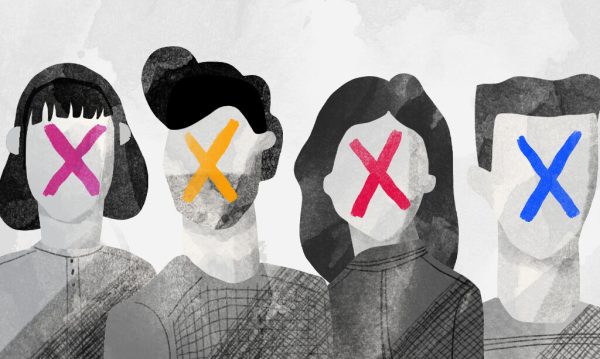Examining the effect of class labels on student performance
The dumb jock, the popular blonde, the nerd who does everyone’s science project just to get attention— all of these labels shape how one views him or herself throughout childhood and adolescence. As students pass the age of unleveled classrooms, they begin to delve into the era of leveled classes that provide a new system of labeling: whether one is an AP, Honors, CP1, or CP2 student. These labels unjustly define students and their academic capabilities. As a result, student performance and identity in the classroom is dependent on the class level that one chooses to define him or herself with; students develop expectations regarding their own potential for academic success and shape their actions around these suppositions.
In a recent experiment, two Walpole High School Statistics classes— one AP and one CP1— agreed to take a curriculum-based quiz that would test their expectations by interpreting the effect of classroom labels. I visited both classes on separate days, gave the same discourse beforehand, and passed out the quiz. The twist was that there were three different copies of the same quiz: one labeled as “AP,” one labeled as “CP1” and the control group just labeled as “Statistics.” In the AP class, student reactions to the quiz were nothing but positive, considering they believed that the quiz was either at their level or meant for students two levels below them.
“When I saw that the quiz was for CP1 students I felt very confident,” said AP Statistics student Conor McMahon. “Being in [an AP class] I expected that I would do very well on this quiz.”
The CP1 students’ reactions were quite different, however, as they believed that the quiz was either designed for their level or two levels above them.
“I feel like my expectations were lower on doing well on an AP quiz rather than a CP1 quiz,” said CP1 S t a t i s t i c s student Olivia West.
The effect of class l a b e l i n g on the ind i v i d u a l is evident from the reactions to the quiz: it causes them to formulate certain expectations regarding who they are as a student and how well they are able to perform in the classroom.
Along with proving the theory that classroom labels affect expectations, the results from the Statistics quiz also correspond with the idea that these expectations contribute to the overall level of individual performance. The AP students, having high self-efficacy, would expect to perform well on any of the three quizzes they took, and they did just that. For the AP Statistics students, the average score on the quiz labeled AP was a 7.3 out of 8; on the CP1 quiz, a 7.5. Because their class title denotes higher intelligence, the AP students expected to perform better on the quiz which they presumed was for CP1 students. In contrast, the CP1 students have lower self-efficacy and expected to underperform on the AP quiz; the results of the quiz proved this statement true. The average score for CP1 students on the quiz they assumed was reflective of their academic standard was a 6 out of 8: a generally mediocre score. The quantitative evidence proves that expectations affect academic performance and is demonstrated in the average score that CP1 students received on the quiz classified as AP — a 4 out of 8. Although the quiz taken by the whole CP1 class was exactly the same, the average score on the quiz categorized as CP1 was 25% better than the average score on the quiz labeled as AP. The variance in the performance on the quiz is reflective of the expectations students have regarding their academic abilities and provides further evidence that scholastic achievement is dependent on one’s class label.
In the classroom setting, labels are key factors in the development of student identity. Most educators believe that creating leveled classes will benefit students by providing them with a community of like-minded individuals; however, this perceived notion is false, since it is the labels themselves that are harmful to the students, especially the lower-leveled students, as they begin to expect less from themselves. These labels are constraining and affect a student’s self-efficacy and self-image. How can one avoid the repercussions of class labels? Perhaps teachers can learn to create a fairness across the board, or maybe even a system that teaches students to believe in their own individual learning capacity. After all, even the dumb jock deserves a shot at success.







